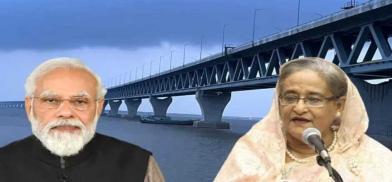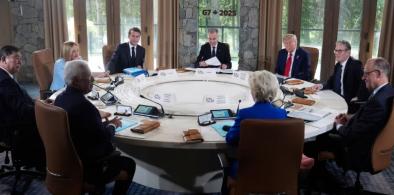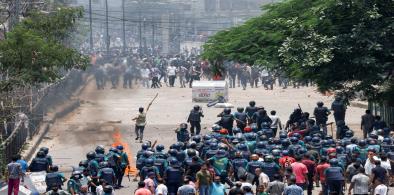Connectivity as a new paradigm in India-Bangladesh relations: Enhanced opportunities and challenges
Keeping in mind the economic progress of Bangladesh, it can be said that besides the construction of the Padma Bridge, the new communication system being developed between the two countries will further strengthen their bonds, writes Tapan Das for South Asia Monitor

Currently, India-Bangladesh relations are better than at any time in the last 50 years. Recently, a new multimodal connectivity system has been developed between the two countries through water, air, and especially land. And keeping in mind the improvement in this connectivity system, the question arises whether it will start a new chapter in India-Bangladesh relations. What changes can this system bring to the social and economic aspects of India and Bangladesh and the subcontinent?
During the early 1970s, the World Bank argued that Bangladesh should be considered a "test case for development." However, Bangladesh's impressive economic growth has put it on the verge of graduating from the list of LDCs (Least Developed Countries). Exports and trading ties between Bangladesh and India will be affected since Bangladeshi goods will no longer be duty-free in India. The CEPA (Comprehensive Economic Partnership Agreement) will therefore have to be implemented bilaterally under a new paradigm. As part of India's Look East Policy, and in trans-regional and sub-regional groups such as BIMSTEC and BBIN, Bangladesh will remain a pivot.
The recently constructed Padma Bridge has re-introduced the importance of connectivity in the India-Bangladesh relationship. The bridge could reduce the cost of trade exchange by more than 75 percent and it will also reduce the congestion at Petrapole-Benapole. This bridge can be used to revive and extend the old rail link between Sealdah and Khulna. Three more bridges will be opened in Bangladesh soon. To meet the desired transportation needs, we are also constructing a multimodal transportation system to synergize the complementarities between railways and waterways. Travel time from India to Bangladesh will be significantly reduced by the Padma Bridge.
Improved connectivity and its benefits
In addition to keeping the divisions of Bangladesh well connected and improving the economy, this unprecedented improvement in transportation and communication systems will also benefit India. Deepening value chains could benefit both Bangladesh and northeastern India, and Bangladeshi companies could become key investors in India's Northeast. Both sides will benefit from increased tourism traffic and improved delivery services.
This kind of communication can promote regional cooperation and integration, trade and investment, economic growth, social development, and people-to-people contacts. As the connectivity between the two neighbours is increasing via rail, road, and river routes, container trucks from Bangladesh can be allowed to move to Mumbai and Ahmedabad and other ports in western India to make the transit of shipments to Europe easier.
This connectivity will help both countries have burgeoning consumer bases. The collaboration will also enhance competitiveness. Moreover, India’s vibrant IT, healthcare and education sectors can utilize the tech-savvy youthful human resource of Bangladesh. Adequately facilitated waterways connectivity can reduce travel costs by 30 percent. Enhanced waterways connectivity can bolster MSMEs (mainly led by women) along the riverbanks. Waterways connectivity initiatives are already in motion (in July 2019; an Indian cargo ship arrived at Narayanganj for the first time.
Boost people to people ties
However, this connectivity will not only bolster ties between the two states but also provide an opportunity for the people of the two countries to interact. I strongly believe that if the two governments can utilize this connectivity system effectively, it will help reduce the social and political animosity between the people of the two sides.
Along with people to people contact, littoral territories have undergone many changes. An example is Kolkata, where various Bangladeshi eateries, hospitals and guest houses have sprung up, making the city a preferred destination for Bangladeshis for medical and tourism purposes.
Other than India and Bangladesh, a regional connectivity system with BBIN states can have multiple benefits. In this case, a free trade zone can be created in this area. The BBINSM subgroup of SAARC mutually shares SAFTA benefits which are supplemented by bilateral arrangements; so mutual trade in essential foodstuffs should not be a problem. It will serve to diversify and strengthen food supply networks and supply chain, reduce fertilizer shortages and subsidies, benefit from sharing best agricultural practices, create output complementarities, reduce demand-supply mismatch, lower bulk import costs, and improve distribution across South Asia.
It is estimated that Bangladesh could mimic the growth path of Southeast Asian peers and reach $4,000+ per capita income by 2026. Consumption already constitutes 73 percent of GDP which is likely to grow more than 12 percent by 2026. About one-third of the population will belong to the middle-income group by 2026 and approximately 11 percent will graduate from the lower-income groups.
By 2026, around 36 percent of the population will have tertiary education and will have higher disposable income. So, keeping in mind the economic progress of Bangladesh, it can be said that besides the construction of the Padma Bridge, the new communication system that is being developed between the two countries will further strengthen their bonds. However, I think Bangladesh needs to keep an eye on flood control and climate change if it is to maintain its economic viability for India and the region.
(The writer, who specializes in Bangladesh politics, is a Ph.D Research Scholar, Department of Political Science, Presidency University, Kolkata. Views are personal. He can be contacted at dtapas319@gmail.com)
Is it very hard to set up your own blog? I'm not very techincal but I can figure things out pretty quick.
I'm thinking about creating my own but I'm not sure where to start.
Do you have any tips or suggestions? Thank you




















Post a Comment